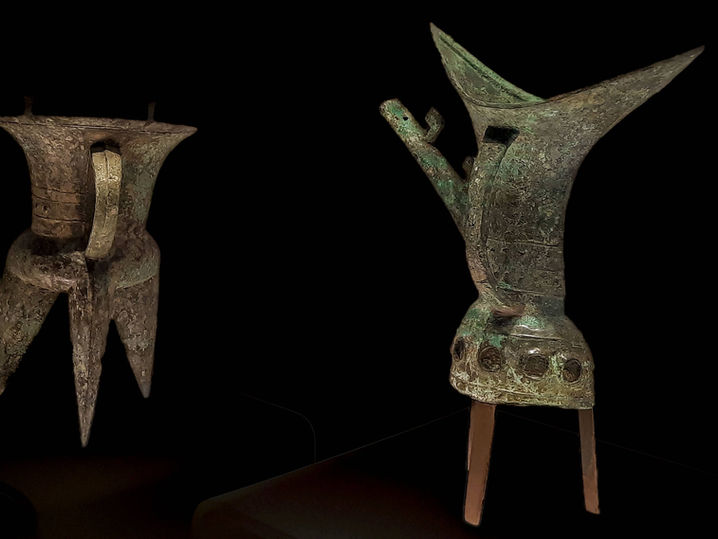
Impressions of Beijing & Shanghai, China
Like many capital cities, Beijing is a microcosmos, nervous centre of two imperial dynasties, the Ming and the Qing, since 1420, when the capital was transferred here from Nanjing. Beijing is also the nervous centre of China's more recent history and its present. It saw British-French occupation in the 1860s during the Second Opium War and again in response to the Boxer Uprising of 1900, it saw the abdication of the country's last - 6 years old! - emperor in 1912, it saw Mao Zedong declare the People's Republic at Tian'an Men Square in 1949, it saw how the country went into crisis during the Cultural Revolution of the 1960s and 70s, with the declared goal of some fanatics to preserve Chinese socialism by purging remnants of capitalist and traditional elements from Chinese society, it saw Tian'an Men Square again in 1989, in the struggle between autocratic rule and the longing for individual freedom. In Beijing the impressions are mainly translated in architecture from the imperial past, places which look … and sound like poetry from paradise: gates of heavenly peace and divine prowess, palaces of heavenly purity, golden streams and temples of eternal peace. We can walk around freely in the Forbidden City today and we can also line up in the queue to pay respect to Mao Zedong in his Mausoleum. Your nervous system probably copes better with the queuing if in the early morning you have joined a group of Beijing locals for some Tai Chi exercise in the Beihai Park. It's all part of the experience.
Shanghai, on the other hand, has itself never been the political capital, but it surely is the economic one today, as the country is quite successfully in search of its balance between its Communist foundations and the appeal of world market economics. Electric cars and digitalisation dominate more than anywhere else, remarkable design architecture lines the Huangpo riverbanks. A still growing multimillion people metropolis where the humiliating past of 19th century British and French 'territorial concessions' has since long made place for self-confidence, belief in the future and a sense of well-being as people go and dance, practice Tai Chi and play badminton in the Fuxing Park or in one of the other city gardens.
Dynasties in a simple timeline
Before visiting the place of your choice:
The most spectacular bridge of the Summer Palace is undoubtedly the Bridge of Seventeen Arches, visible from afar on top of Longevity Hill. The bridge connects the artificial Nanhu Dao island in the South Lake to the mainland garden section over a distance of 150 metres. The access on the mainland side is guarded by a large bronze ox. Nearby is also the small but very elegant Jade-belt Bridge. The Wenchang Tower or Purple Cloud Tower is the biggest passage gate and was erected on the orders of the Qianlong Emperor in 1750. In total the Summer Palace counts six major passage gates. The Wenchang Tower was rebuilt in 1860 by … the Anglo-French alliance troops during the Second Opium War in 1860. For once, they busied themselves building something instead of tearing or burning it down...

© 2020.Created by Marc Van den Reeck with Wix.com























